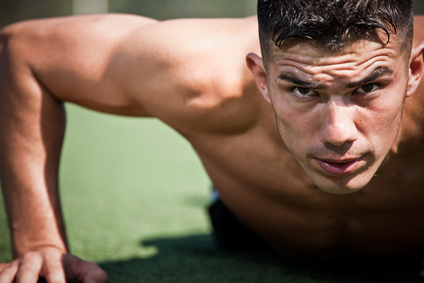What You Need To Know About High Intensity Interval Training (HIIT)
Exercising can result in a variety of different body types. Imagine a sprinter; eery muscle defined, looking like they could also be pro bodybuilders. Now, imagine a long distance runner; little to no fat on their body, and any muscle they have is lean and miniscule. Both athletes train excessively, yet look very different. Their workout regimes would account for this.
What is HIIT?
High intensity interval training, HIIT for short, is a form of cardio in which you perform any exercise at a high level of physical exertion followed by a period rest/recovery. This is then repeated for a predetermined number of sets.
The type of exercise you use is completely up to preference; the only requirement is that you work close to your full capacity. You can vary the timing of the intervals to suit your level of conditioning. A good ratio to start off with is 20 seconds of high intensity followed by a minute of rest.
What Are Some of The Benefits of HIIT?
Some of the benefits associated with high intensity interval training include the following:
-
Increased Fat Burning: Studies have shown that HIIT training can more than double the fat burning effects of steady state cardio. When you finish a steady state cardio session, your fat burning is pretty much over, but when you finish a HIIT session your body can continue burning fat for over 24 hours. Burning fat while you sleep sounds pretty good to me!
-
Time: A good HIIT session wont take longer than 20 minutes to complete. Tabata Training, a form of HIIT, in which you do 20 seconds of intense exercise followed by 10 seconds rest, only lasts a total of 4 minutes. Even if you don’t have time to get in a full workout on your lunch break, there is no excuse not to get in a quick HIIT session.
-
Space: HIIT can be done swimming, running, biking, using various exercise machines or doing pretty much any exercise at a fast pace. The example HIIT workouts below are great examples of a cardio session that can be done with no weights or machines and very limited space (excluding the advanced routine).
-
Athletic conditioning: The consistent change in your heart rate while performing a HIIT workout allows for dramatically improved endurance. Mix HIIT routines and steady state cardio sessions during the week and you’ll be in amazing shape for any sport.
Are There Any Negatives of HIIT?
There is only 1 real negative I can really associate with HIIT:
-
Potential for Injury: Because of the high amount of strain this type of cardio puts on your muscles and joints it is important to get in a good dynamic warm up to avoid injury. It is also not advisable to do the same HIIT routine on back-to-back days as this puts a lot of stress on those muscles used.
Example Routines
Beginner
Repeat this circuit two times with no rest in between. For the best results for fat loss do this right when you wake up before eating.
Lunges (right leg only) – As many as possible for 20 seconds
Rest – 10 seconds
Pushups – As many as possible for 20 seconds
Rest – 10 seconds
Lunges (Left Leg only) – As many as possible for 20 seconds
Rest – 10 seconds
Crunches- As many as possible for 20 seconds
Rest – 10 seconds
Intermediate
Repeat 8 times:
Burpees – As many as possible for 20 seconds
Rest – 10 seconds
Advanced
Warning: this is extremely taxing, and should not be performed unless you are in great shape!
For this routine you will need a treadmill. Don’t turn it on, instead you are going to hold on to the arm rests and try and move the tread mill tracks with your own leg power. Try and go as fast as you can.
Repeat 8 times:
Treadmill Push – As fast as possible for 20 seconds
Rest – 10 seconds
Although a lot of us are comfortable with their normal weight lifting regiment, high intensity interval training is a great way change things up to keep our bodies guessing. Do you have a specific HIIT training workout? Please share your workouts in the comment section below!
Justin Mondor is the co-founder of Gym Star, an elite athletic apparel company. He has a wealth of experience in writing about bodybuilding, fitness and nutrition. Follow him on Twitter.



